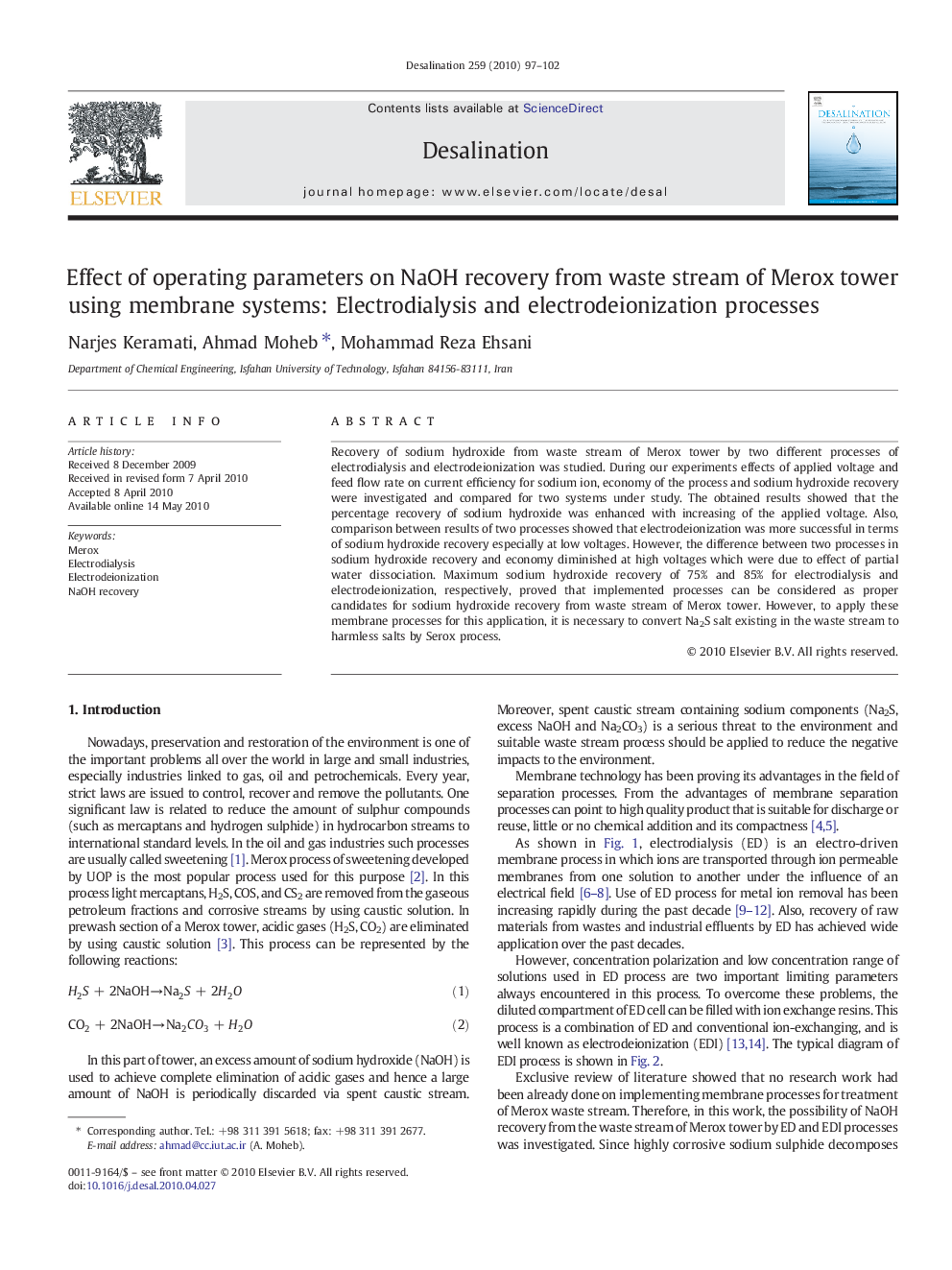| Article ID | Journal | Published Year | Pages | File Type |
|---|---|---|---|---|
| 625691 | Desalination | 2010 | 6 Pages |
Abstract
Recovery of sodium hydroxide from waste stream of Merox tower by two different processes of electrodialysis and electrodeionization was studied. During our experiments effects of applied voltage and feed flow rate on current efficiency for sodium ion, economy of the process and sodium hydroxide recovery were investigated and compared for two systems under study. The obtained results showed that the percentage recovery of sodium hydroxide was enhanced with increasing of the applied voltage. Also, comparison between results of two processes showed that electrodeionization was more successful in terms of sodium hydroxide recovery especially at low voltages. However, the difference between two processes in sodium hydroxide recovery and economy diminished at high voltages which were due to effect of partial water dissociation. Maximum sodium hydroxide recovery of 75% and 85% for electrodialysis and electrodeionization, respectively, proved that implemented processes can be considered as proper candidates for sodium hydroxide recovery from waste stream of Merox tower. However, to apply these membrane processes for this application, it is necessary to convert Na2S salt existing in the waste stream to harmless salts by Serox process.
Keywords
Related Topics
Physical Sciences and Engineering
Chemical Engineering
Filtration and Separation
Authors
Narjes Keramati, Ahmad Moheb, Mohammad Reza Ehsani,
